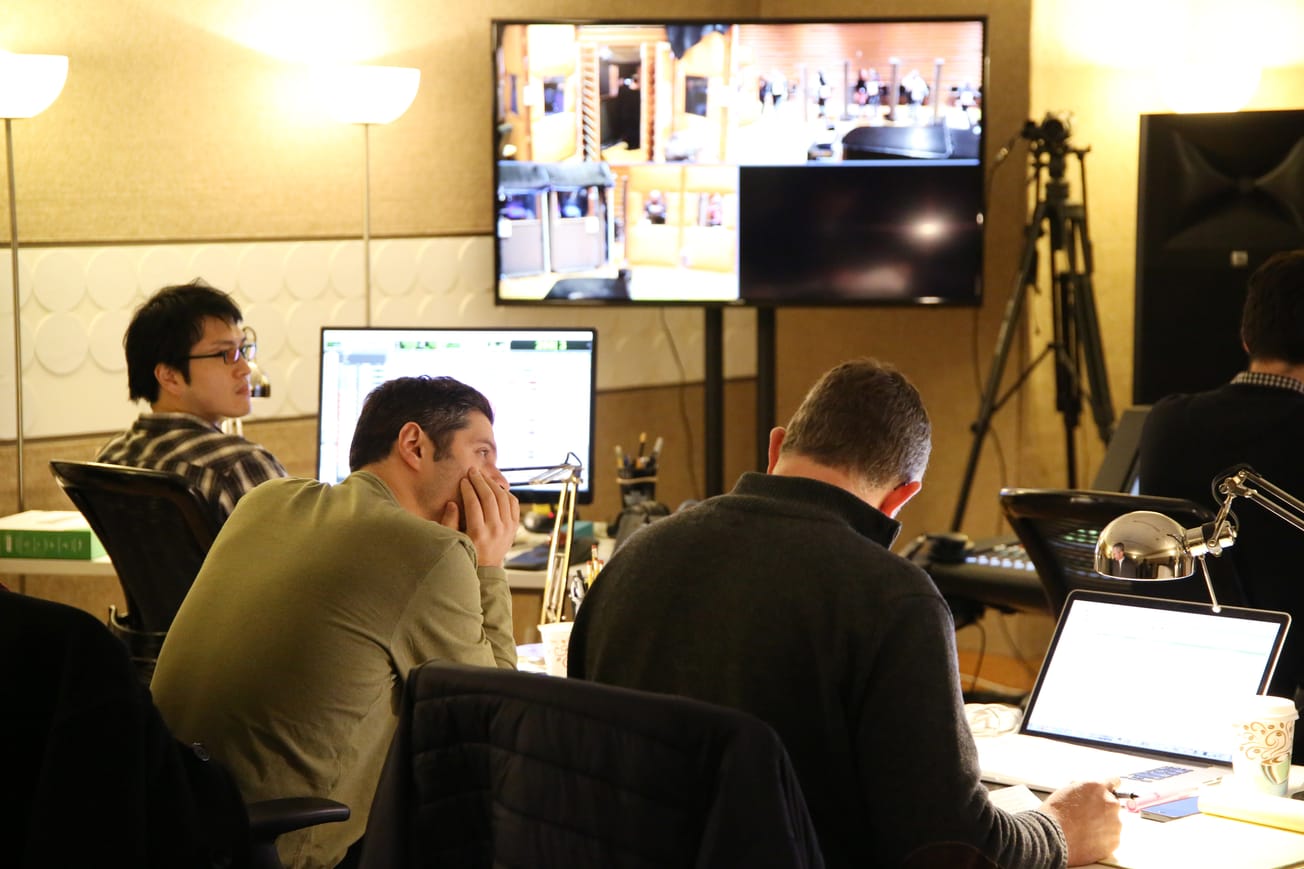Do you remember the first cast album you owned? Maybe it was a vinyl you saved up for and bought at your local record store, a CD you purchased at a show’s merch stand or an iTunes album you downloaded from an early digital release. Perhaps you wore out that record, imagining what the musical looked like onstage, or spent nights thumbing through the CD booklet, ensuring you sang the correct lyrics in perfect unison with the stars.
Cast albums can be an introduction to a show theatergoers have yet to see or an auditory reminder of a show they already love. Either way, these records often serve as the sole preservation of an ephemeral experience. But what does it take to capture this live art form for a permanent album?
From a recording perspective, “cast recordings are like nothing else,” said Janet Weber, a longtime recording production manager. The process is unique when compared to all other music recording, particularly in its speed. (While most albums take months to simply record, cast albums are typically recorded in three days’ time — but we’ll get into all of that.)
In this series, Broadway News delves into the creation of a cast recording. Each part breaks down a single phase of the process: pre-production (preparations before recording), production (recording in the studio), post-production (editing, mixing and mastering after recording) and the selling of the final album.
Meet four artists, each occupying a crucial role in recording, who will narrate their process:
Janet Weber, recording production manager: Weber’s career began working for one of the top rock-and-roll record producers. In the early 1990s, Weber’s interests transitioned to cast albums. Today, as a freelance recording production manager, Weber is in charge of creating a budget for the album, setting and overseeing the recording schedule, booking studio time, hiring an engineer, tracking payment for all talent and more. Weber is essentially the head of logistics.
Scott M. Riesett, record producer: Riesett is a freelance record producer who for 30 years has been producing music — cast albums for 15 of those. Riesett began his career composing jingles. While working for a New York City jingle house, composer Marc Shaiman (who was based in Los Angeles) needed studio space to write and record his score for the movie “In & Out.” Riesett and Shaiman shared studio space and developed a rapport. When Shaiman was writing the score to “Hairspray” with co-lyricist Scott Wittman, Riesett recorded demos for the writing duo. Riesett later produced the cast album for Shaiman and Wittman’s “Catch Me If You Can” musical — his first as a producer.
Tom Kitt, composer, orchestrator, record producer: A Tony Award-winning composer and orchestrator, Kitt made his Broadway composing debut with 2006’s “High Fidelity” and shot to fame with his music and orchestrations for 2009’s “Next to Normal.” Kitt’s career has included duties as an arranger, orchestrator, music director, conductor, music supervisor, composer and lyricist across 17 Broadway shows to date. He has also produced the cast albums for shows featuring his music as well as musicals for which he has orchestrated or arranged.
Scott Farthing, executive vice president of Sony Masterworks U.S.: Farthing began his career at Sony Music in sales and distribution. When the label founded Sony Masterworks in 2009, Farthing came on to launch the brand, which included a combined catalog from Columbia Records, RCA Victor records and more due to a label merger. The first Broadway cast album produced under Farthing’s purview was 2012’s “Once,” which went on to win the Grammy Award for Best Musical Theater Album. Today, Farthing supervises Masterworks Broadway as well at the day-to-day operations for the national Sony Masterworks division.
Editor’s note: Every album is singular. Every label and operation works in its own way. The following is meant to serve as a broad example of the ways in which a cast album comes together.


























































